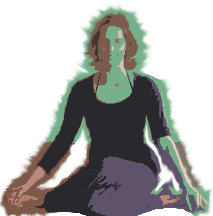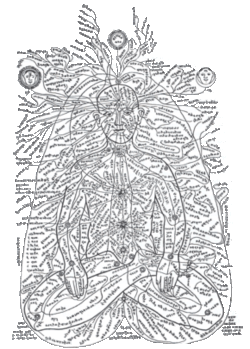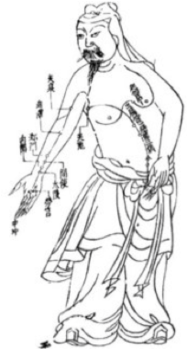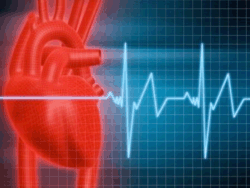By Bernie Clark, November 1st, 2016
What are we doing energetically in our yoga practice?
There are 3 ways we use energy in our bodies: for transportation, for transformation and for communication. Communication is the most subtle of these uses of energy, and is the energy responsible for the more mysterious benefits of our yoga practice.
| The three uses of energy |
| 1) Transportation |
| 2) Transformation |
| 3) Communication |

Energy for transportation is obvious: we use energy to move things around the body: blood is moved by the pumping of the heart–that takes energy; cells swim or crawl through our tissues; our muscles contract to move our limbs–all these use transportation energy. Transformation changes things into other things: our saliva begins to transform starch into simpler sugars; our stomach heats, churns and burns our food into easier to absorb nutrients; our liver is a transformation factory producing glycogen, breaking down worn out blood cells, detoxifying unhealthy substances–all of which uses transformation energy.
 Communication is subtler than transportation or transformation. It requires less energy, but without it the other two will not happen. Consider this analogy: you want to cook a Thanksgiving turkey dinner, but do not know how high to set your oven’s temperature. (Being a yogi, this will obviously be a tofu turkey!) So, you call your mother on your cell phone and she tells you to set the oven to 350F. Now, your oven will use thousands of watts of power, but your cell phone used only milliwatts of power[1]: the oven is a million times more powerful than your phone, but without your phone’s tiny bit of communication energy, the transformation power of the oven is dormant. It is easy to notice the large sources and uses of transformation and transportation energy in the body, but it is far more challenging to notice when communication is happening, or isn’t happening when it should be.
Communication is subtler than transportation or transformation. It requires less energy, but without it the other two will not happen. Consider this analogy: you want to cook a Thanksgiving turkey dinner, but do not know how high to set your oven’s temperature. (Being a yogi, this will obviously be a tofu turkey!) So, you call your mother on your cell phone and she tells you to set the oven to 350F. Now, your oven will use thousands of watts of power, but your cell phone used only milliwatts of power[1]: the oven is a million times more powerful than your phone, but without your phone’s tiny bit of communication energy, the transformation power of the oven is dormant. It is easy to notice the large sources and uses of transformation and transportation energy in the body, but it is far more challenging to notice when communication is happening, or isn’t happening when it should be.
Communication happens in a variety of ways: consider several examples of how we communicate with each other. The spoken word uses sound energy; the written word uses light energy; the light touch of a hand or a hearty hug uses pressure energy; a woman’s perfume uses chemical energy–all these forms of energy send messages or signals. So too, within the body, there are many ways that communication occurs. The Indian yogis detected 10 kinds of energy called prana (figure 1), which they defined as life energy; the Daoist sages in China intuitively mapped out 32 forms of chi (figure 2), which they consider universal energy, including but also beyond life energy. In the West, through the medical science of cellular signaling, we have enumerated hundreds of ways that communication occurs inside the body. These are grouped into 3 broad classes: mechanical, biochemical and electromagnetic.[2]
 Energetically, we do two things in our yoga practice: we turn on the tap to stimulate energy to flow, and we remove blockages to the flow[3]. Yoga can stimulate (“turn on the tap”) the flow of all three forms of energy: transportation (our heart rate increases); transformation (glycogen is converted to glucose to feed our muscles and brain); and communication (electrical signals are created via the nervous system, but also within the fascial system through pressure signals; chemical messages are sent out in the form of hormones and other growth factors; bioelectromagnetic impulses travel through the water of our body, stimulating cells to activate.)
Energetically, we do two things in our yoga practice: we turn on the tap to stimulate energy to flow, and we remove blockages to the flow[3]. Yoga can stimulate (“turn on the tap”) the flow of all three forms of energy: transportation (our heart rate increases); transformation (glycogen is converted to glucose to feed our muscles and brain); and communication (electrical signals are created via the nervous system, but also within the fascial system through pressure signals; chemical messages are sent out in the form of hormones and other growth factors; bioelectromagnetic impulses travel through the water of our body, stimulating cells to activate.)
| Two ways Yoga affects energy |
| 1) Stimulates the flow |
| 2) Removes blockages |
The heart, far from being merely a pump, is the center of a communication system: with each beat it is transmitting electromagnetic fields and signals through the wet conduits of the body (the cardiovascular system and the fascial system); it is also creating and sending sounds waves and pressure waves, which are also communication signals. This is not new news: we have known about the heart’s electromagnetic fields for a long time: that is the basis of electrocardiograms (ECGs); and doctors have listened to the heart (sound energy) and felt the pulse (pressure energy) for millennia. What was not known until recently is that these diagnostic energies are actually therapeutic energies. We have cells in our bodies that respond to the heart’s electromagnetic messages, and to the pressure and sounds generated by the heart as well.[4] If the heart was simply a pump, why then do people die instantly when they suffer a heart attack?[5] The brain can survive for several minutes without oxygen, but death is immediate when the heart shuts down: when the heart’s communication ceases, the body instantly dies.
 Subtle energies can turn on a massive device like an oven, organs like the liver, and activate our muscles and the immune system. Being subtle, however, these energies and their importance were missed for a long time by Western researchers: they were too tiny (too subtle) for our instruments to notice. Through our yoga practice, we use three techniques to initiate and enhance this subtle energy: physical postures or movements (known as acupressure), breath, and awareness. Postures and movements create pressure which is an important signaling mechanism called mechanotransduction; breath is movement, but it is also a source of oxygen, obviously a very important fuel for all cells, but beyond that, our breath is connected to our nervous system in a way that can turn on or off our stress or rest reactions; awareness directed to particular areas also enhances energy flow. As an experiment, try concentrating on the tip of your thumb for one minute and notice how much warmer it becomes. Awareness dilates the blood vessels and allows more energy to reach that area. In our yoga practice, we create pressure and tension in our tissues through our postures, we pay attention to the stresses generated, and we direct our breath into the sensations. This practice opens the communication channels, called nadis by yogis and meridians by the Daoists .
Subtle energies can turn on a massive device like an oven, organs like the liver, and activate our muscles and the immune system. Being subtle, however, these energies and their importance were missed for a long time by Western researchers: they were too tiny (too subtle) for our instruments to notice. Through our yoga practice, we use three techniques to initiate and enhance this subtle energy: physical postures or movements (known as acupressure), breath, and awareness. Postures and movements create pressure which is an important signaling mechanism called mechanotransduction; breath is movement, but it is also a source of oxygen, obviously a very important fuel for all cells, but beyond that, our breath is connected to our nervous system in a way that can turn on or off our stress or rest reactions; awareness directed to particular areas also enhances energy flow. As an experiment, try concentrating on the tip of your thumb for one minute and notice how much warmer it becomes. Awareness dilates the blood vessels and allows more energy to reach that area. In our yoga practice, we create pressure and tension in our tissues through our postures, we pay attention to the stresses generated, and we direct our breath into the sensations. This practice opens the communication channels, called nadis by yogis and meridians by the Daoists .
| Three ways to stimulate energy |
| 1) Acupressure from postures & movements |
| 2) Breath |
| 3) Directed awareness |
While the energy of communication is challenging to detect, with practice any yoga student can start to tune inward and sense its flow. Sensing it can enhance it. Our physical yoga practice combined with breath may stimulate and remove blockages to communication, and we can make our yoga more effective by combining all that with inner awareness.
Move, breath, pay attention…that is a simple recipe for a yoga practice.
Footnotes:
- — Power is the rate at which energy is consumed: the greater the power the more energy is consumed and/or the faster the energy is consumed
- — This is not a complete categorization; there are more ways to communicate than these 3 broad categories. The interested reader can check out James Oschman’s book Energy Medicine for reports on how light, sound, pressure and magnetic energy is used for communication inside the body. He even speculates that other forms of energy may be used, such as infrared and microwaves.
- — The Indian yogis call these blockages “granthis“.
- — See James L. Oschman’s book, Energy Medicine: The Scientific Bases
- — Thanks to Daniel Keown for noting this. See his book, The Spark in the Machine.